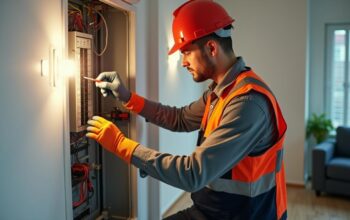
Embracing the prospect of home renovations can bring a fresh sense of excitement, but it’s no secret that financing these transformative projects often tops homeowners’ concerns. Fortunately, there are more options than ever to make your renovation dreams a reality.
Modern financing programs, strategic cost-saving tactics, and government incentives offer creative pathways to afford home improvements. By taking the time to learn how to apply for RbA financing and to explore additional resources, you can navigate the process with confidence and avoid unnecessary stress.
Affordable renovations depend on flexible financing and careful planning. Homeowners can reduce costs by combining traditional loans with rebates, grants, and DIY work, especially as material and labor prices fluctuate. Researching tax credits, weatherization assistance, and local discounts can further cut expenses, allowing small savings to accumulate into meaningful improvements in comfort, value, and energy efficiency.
Contents
Flexible Financing Options
Traditionally, home renovations were funded primarily through savings or standard bank loans. Now, options like a Home Equity Line of Credit (HELOC) make funding much more accessible. A HELOC lets you borrow against your home’s equity as needed, often with a lower interest rate than personal loans or credit cards. This type of revolving credit lets you draw funds during crucial phases of your project, controlling costs as you go. Some lenders even link your HELOC to a credit card for seamless access.
Government Programs and Tax Credits
Federal and state governments are increasing support for eco-friendly and modernization initiatives. The Energy-Efficient Home Improvement Credit, for example, provides valuable tax credits for upgrades such as efficient HVAC systems, replacing windows, or improved insulation.
At the state level, weatherization programs target low- and moderate-income families to help reduce utility expenses and improve year-round comfort. Tapping into these incentives can mean thousands in savings over time.
Cost-Saving Strategies
Clever cost management doesn’t mean compromising your vision. By approaching your renovation with a careful plan, you can significantly trim your spending while still achieving outstanding results. Here’s how:
Prioritizing High-Impact Areas
Focus first on spaces with the highest daily use or those that most affect your home’s value—like kitchens, bathrooms, and energy systems. Simple updates, such as new cabinet hardware, modern faucets, or upgraded lighting, can create a big impact without a significant investment. These projects often recoup much of their cost at resale and enhance your family’s daily experience.
Smart Shopping for Materials
Sourcing discounted materials from clearance stores, Habitat for Humanity ReStores, or local salvage yards can deliver extraordinary savings. Shopping for significant sales or buying in bulk is another potent way to stay on budget. Many large retailers offer “open box” deals or steeply discounted returned items—always check these options before paying retail. Online marketplaces are also treasure troves for barely used fixtures and building supplies.
DIY Projects
Homeowners willing to roll up their sleeves can save considerably by handling manageable tasks themselves. Painting, simple landscaping, or laying peel-and-stick backsplash can all be tackled with some patience and researched guidance. For more advanced work, consider partnering with friends or family who have relevant experience—or leveraging free workshops offered by hardware stores. Before starting, ensure your project complies with local codes and permits.
Energy-Efficient Upgrades
Energy-saving updates produce ongoing value, lowering your monthly costs and reducing your environmental footprint. Options like LED lighting, efficient water fixtures, and smart thermostats are affordable and relatively easy to install. Upgrading windows or sealed doors can prevent costly drafts, further improving both comfort and efficiency. Many of these upgrades are eligible for tax credits and rebates, multiplying your savings in the long term.
Conclusion
With creative planning, it’s entirely possible to renovate your home in a way that balances aspiration with affordability. From exploring options like HELOCs and government tax credits to implementing powerful cost-saving strategies, your ideal living space is within reach.
Remember to research the details of local, state, and federal programs and plan your improvements thoughtfully. Smart strategies and resourceful spending will ensure that your renovation makes a lasting impact—without unnecessary financial hardship.



